Normal Initial and Final Consonant Blends Worksheets for Ages 4-8
5 filtered results
-
From - To
Empower young learners with our engaging "Normal Initial and Final Consonant Blends Worksheets" designed for ages 4-8. These captivating activities help children develop essential reading and phonics skills by focusing on blends such as "bl," "st," "sk," and more. The worksheets offer a variety of fun and interactive exercises, ensuring that kids remain enthusiastic while mastering consonant blends. Ideal for both classroom and home environments, our worksheets support literacy development, improve pronunciation, and build a solid foundation in reading. Spark your child's love for learning with these expertly crafted, age-appropriate resources from Kids Academy!
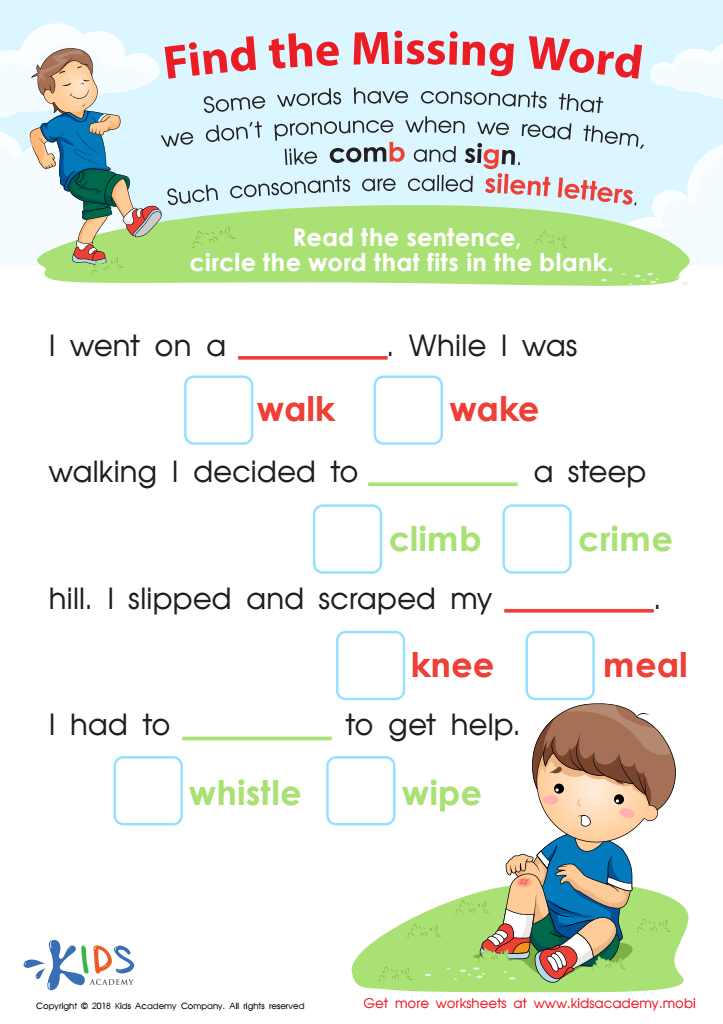

Find The Missing Word Worksheet
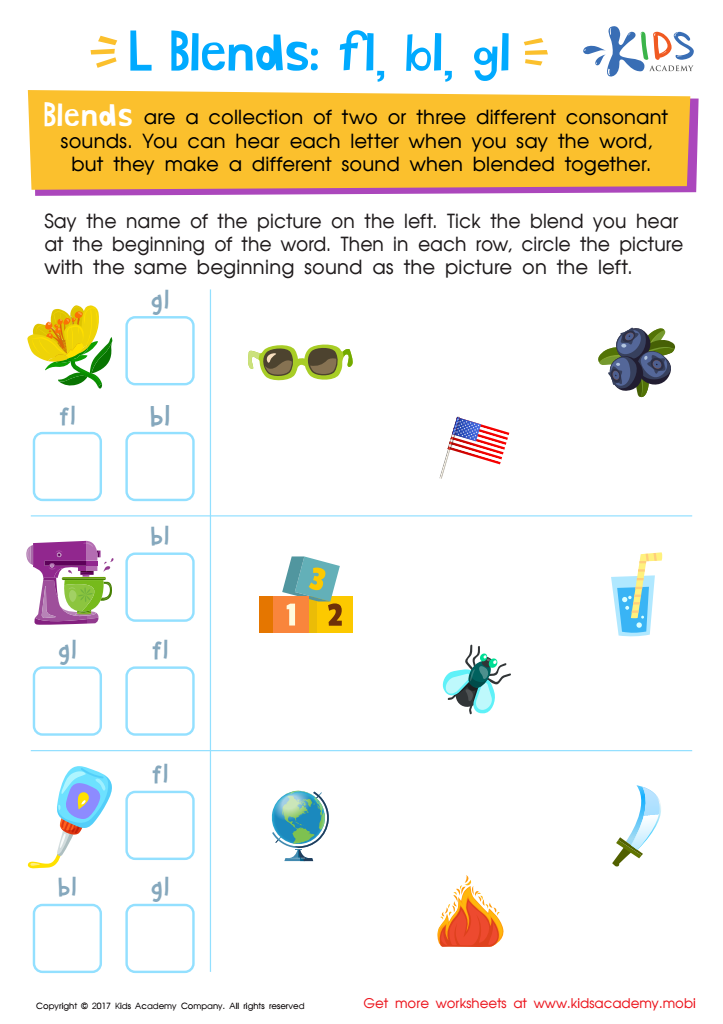

Blending Consonants: "Fl", "Bl" and "Gl" Printable
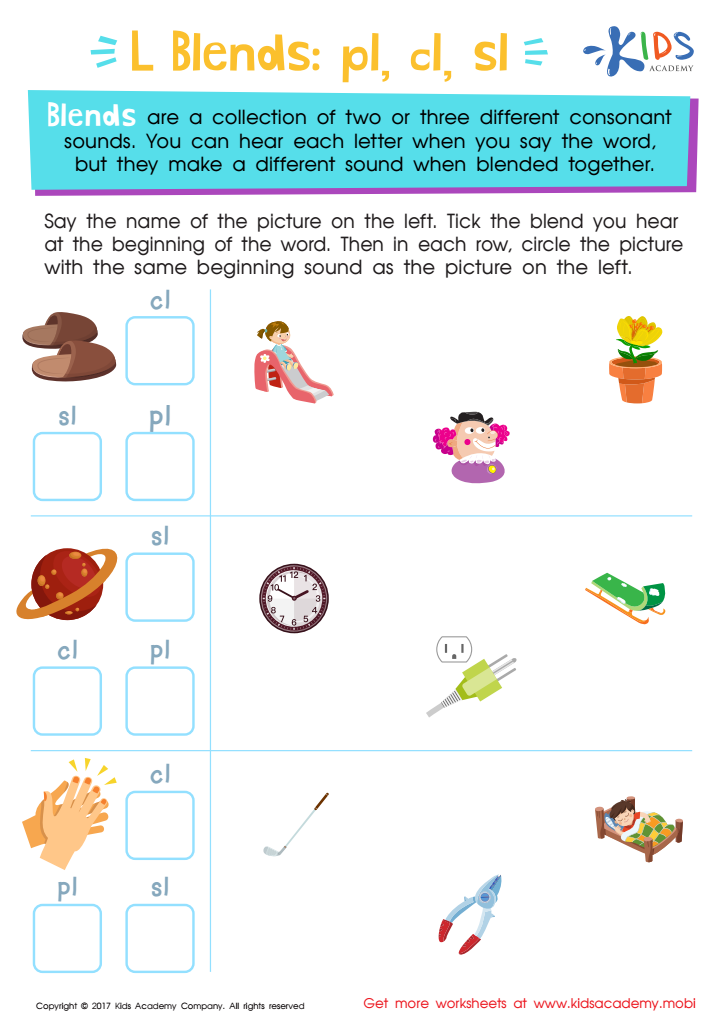

L Blends: "Pl", "Cl" and "Sl" Printable
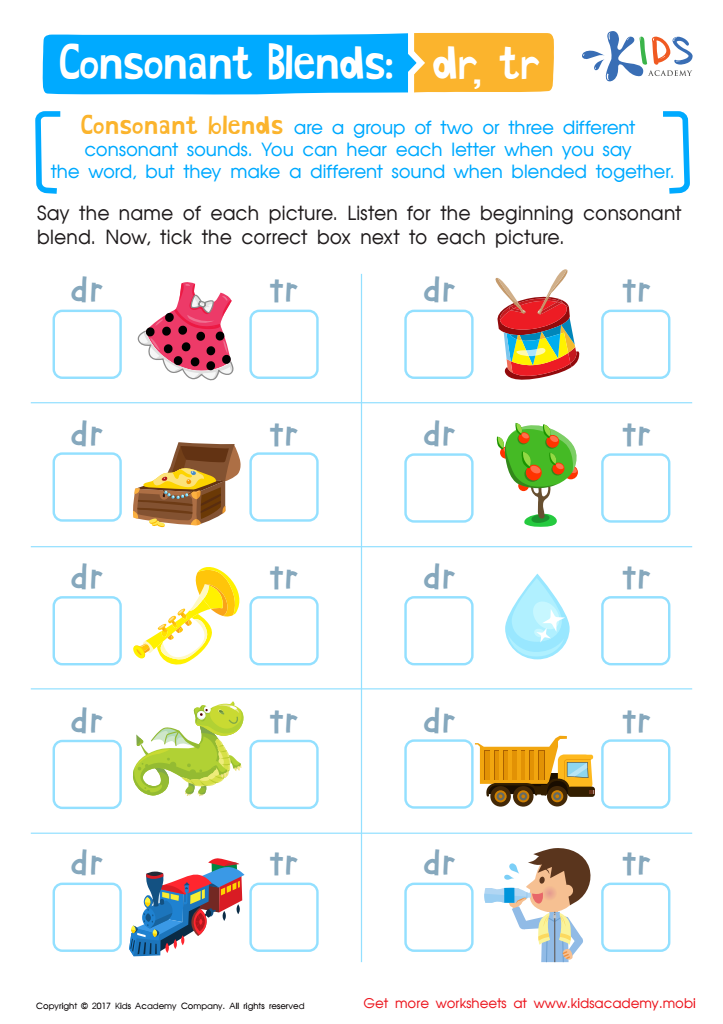

Consonant Blends: "Dr" and "Tr" Printable
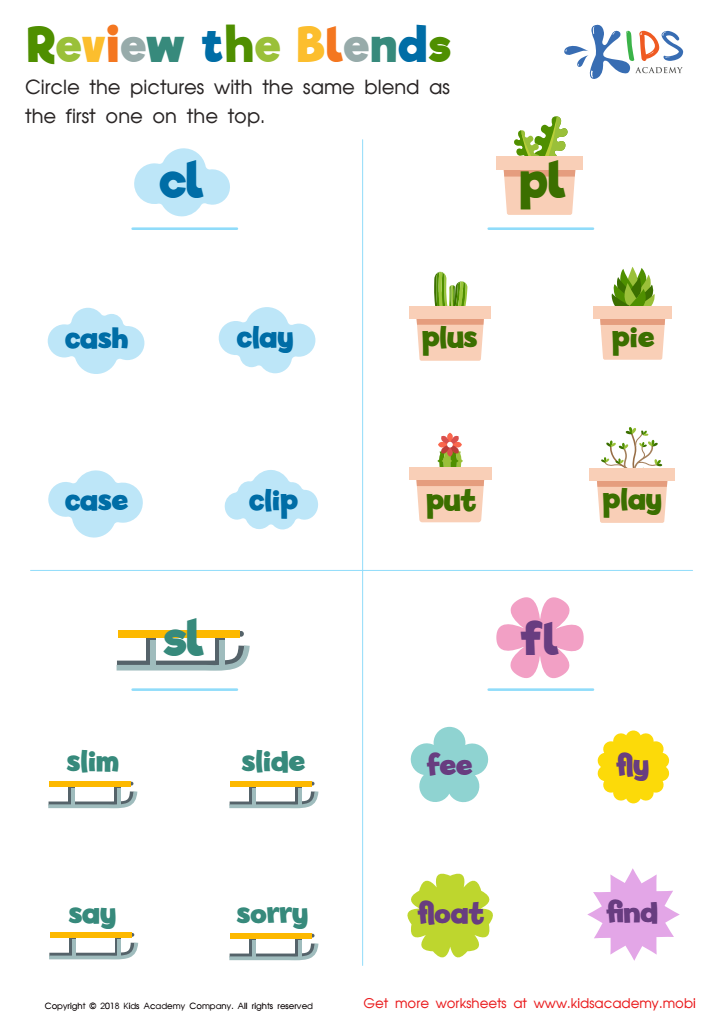

Review the Blends Worksheet
Parents and teachers should care about normal initial and final consonant blends for children ages 4-8 because these blended sounds are foundational for developing strong reading and spelling skills. Consonant blends involve the combination of two or more consonants where each consonant's sound is heard, such as "bl" in "blue" or "st" in "nest." Mastery of these blends is essential for phonemic awareness, which is the ability to hear, identify, and manipulate individual sounds in words—a critical step in learning to read.
During ages 4-8, children are at a crucial stage where their brains are especially receptive to language development. Introducing consonant blends early helps expand their vocabulary and improves fluency, enabling them to decode unfamiliar words more effectively. As students become more familiar with these sound patterns, their confidence in reading aloud and in understanding what they read increases, contributing positively to their overall literacy.
Moreover, understanding initial and final consonant blends aids in spelling, allowing children to chunk and segment words accurately. Small group activities, flashcards, and interactive games focusing on these blends can make learning fun and engaging, helping young learners solidify these critical language skills early on. Ultimately, early mastery of consonant blends offers lifelong benefits, forming a strong foundation for literacy and academic success.
 Assign to My Students
Assign to My Students










